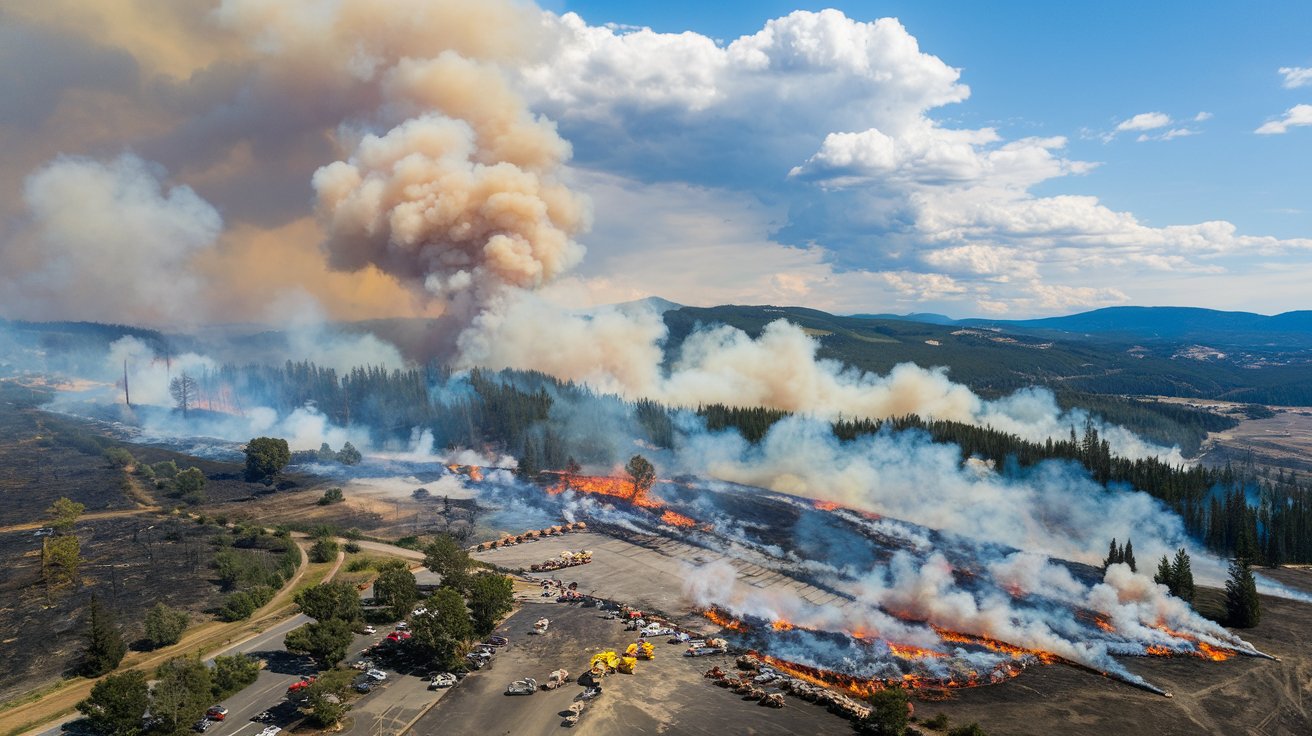California’s Wildfire Alert: Massive Blaze Forces Evacuations—How Climate Change Is Fueling the Crisis
California wildfires have become increasingly severe in recent years, with the latest blaze forcing thousands of residents to evacuate their homes. California wildfires are not just natural disasters; they are rapidly escalating crises fueled by climate change. This article delves into the causes, impacts, and the role of climate change in worsening these fires.
The Growing Wildfire Crisis in California
California is currently grappling with massive wildfires, including the Palisades and Eaton fires in Los Angeles. These fires have scorched nearly 40,000 acres, destroyed over 12,000 structures, and tragically resulted in at least 27 fatalities. Thousands of residents have been forced to flee, leaving behind homes and communities devastated by the flames.
How Climate Change is Fueling California Wildfires
Climate change plays a pivotal role in intensifying California’s wildfire crisis. Rising global temperatures lead to prolonged droughts, making vegetation extremely dry and highly flammable. Earlier snowmelts and reduced precipitation extend the fire season, increasing the likelihood of large-scale fires.
According to the California Air Resources Board, the area affected by wildfires has grown significantly since 1950, correlating with warmer temperatures and earlier snowmelt patterns. This data underscores how climate change is not a distant threat but an immediate crisis.

Economic and Environmental Impact of California Wildfires
The economic toll of these fires is staggering. Insured losses are estimated between $28 billion and $75 billion, with total economic damage potentially reaching $275 billion. This makes it one of the most costly natural disasters in U.S. history.
Environmentally, wildfires release massive amounts of carbon dioxide, contributing to greenhouse gas emissions. They also destroy forests that act as carbon sinks, further exacerbating climate change.
Urban Areas: A New Frontier for Wildfires
Wildfires are no longer confined to remote forests. Urban areas like Los Angeles face growing risks as expanding populations encroach on wildland-urban interfaces. High winds and dry conditions can rapidly transform small fires into uncontrollable blazes, overwhelming emergency services and complicating evacuation efforts.

What Can Be Done? Strategies for the Future
Addressing California’s wildfire crisis requires a multi-pronged approach:
- Improved Land Management: Controlled burns and forest thinning can help reduce fuel loads.
- Resilient Infrastructure: Updating building codes to make structures more fire-resistant.
- Climate Action: Reducing greenhouse gas emissions to mitigate long-term climate change effects.
Investments in early warning systems and emergency response infrastructure are also crucial for saving lives and minimizing damage.
Conclusion
California’s wildfire crisis is a stark reminder of the urgent need to address climate change. As fires become more frequent and destructive, proactive measures are essential. This includes not just emergency responses but long-term strategies to mitigate climate change and protect vulnerable communities. [USnewsSphere.com]





